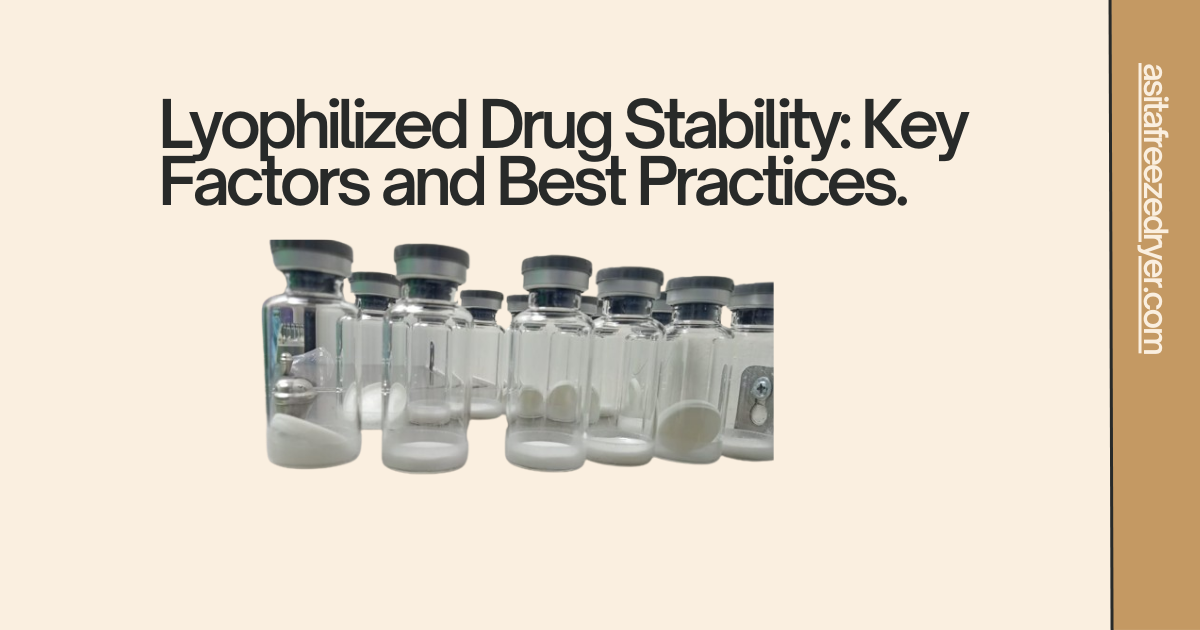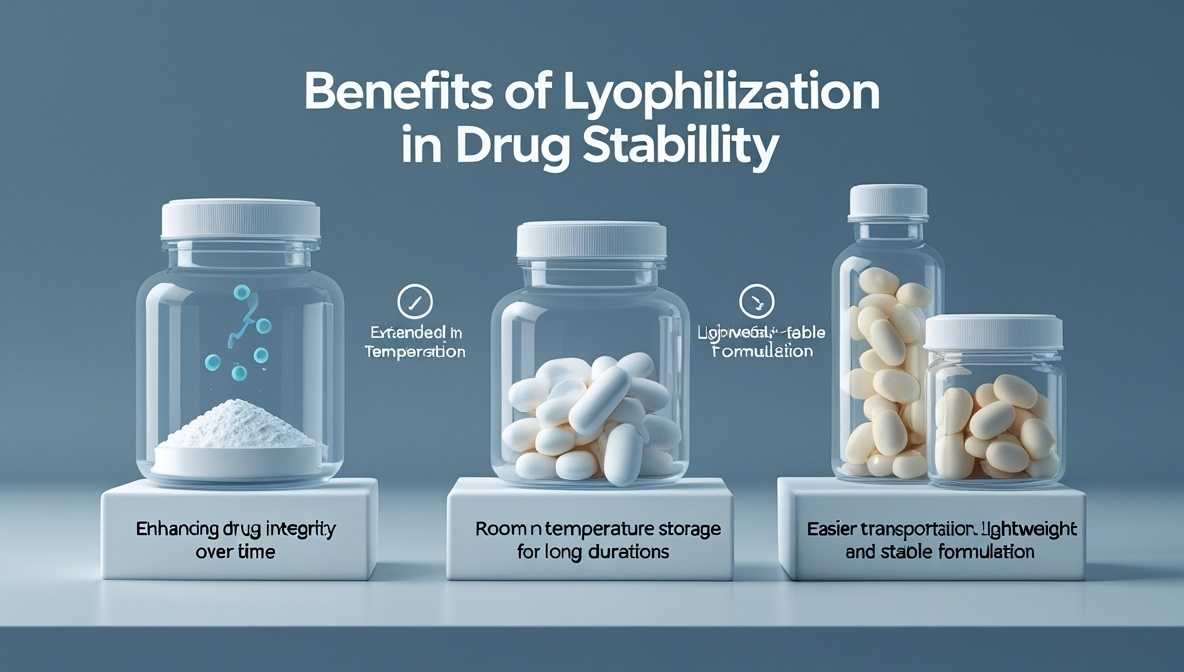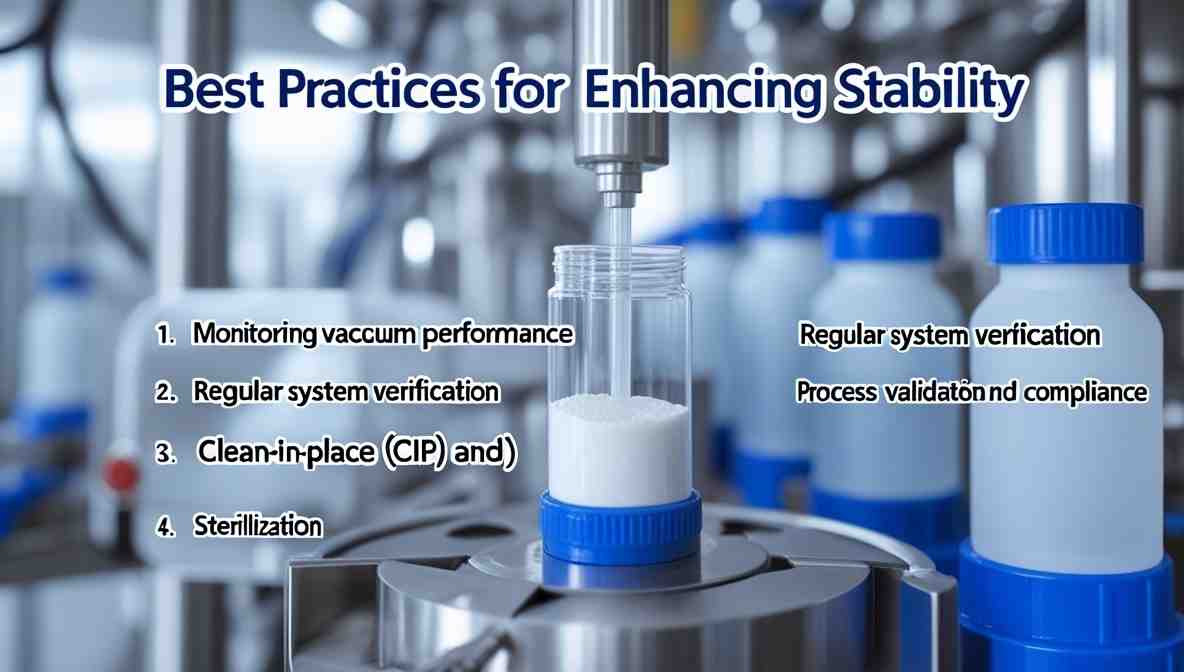Lyophilized Drug Stability: Key Factors and Best Practices. Lyophilization, or freeze-drying, is a widely used technique to enhance the stability and shelf life of pharmaceutical products. However, maintaining the stability of lyophilized drugs requires precise control of various factors during and after the process. This article explores the essential elements affecting lyophilized drug stability and best practices to optimize their preservation.
Factors Affecting Lyophilized Drug Stability
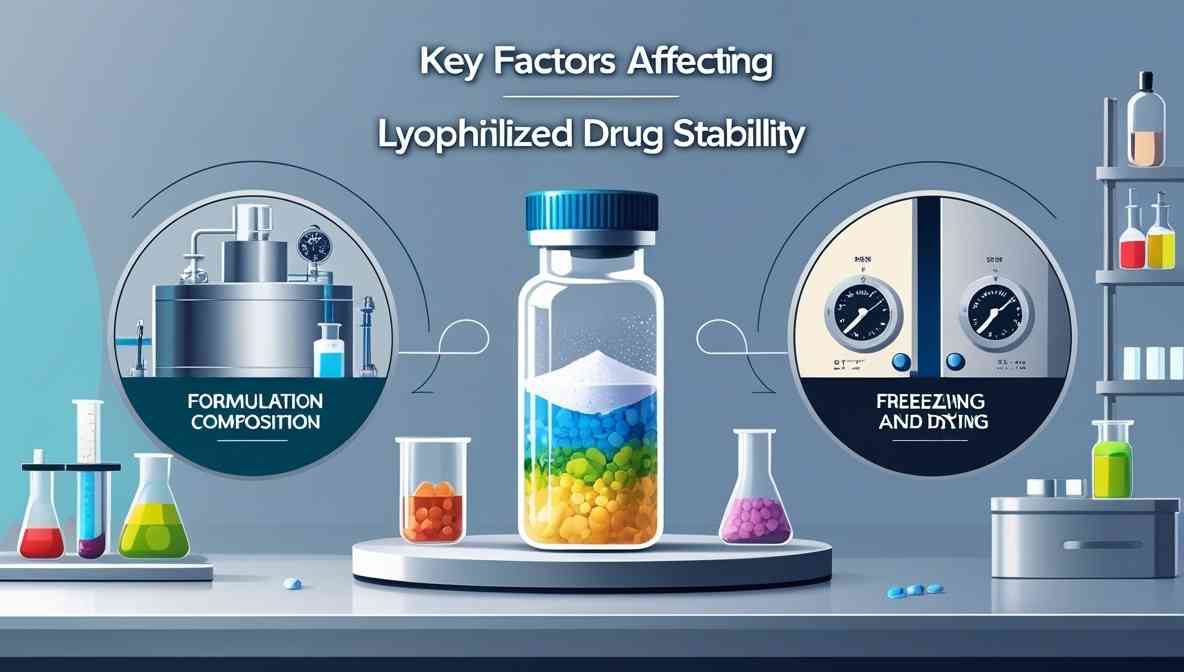
1. Formulation Composition
The selection of excipients, stabilizers, and bulking agents plays a critical role in drug stability. Cryoprotectants and lyoprotectants help maintain the drug’s integrity during freeze drying. Learn more about cryoprotectants in freeze-drying.
2. Freezing and Drying Parameters
Proper freezing rates and primary and secondary drying conditions impact product stability. Temperature control during the process is crucial to prevent thermal degradation.
3. Packaging and Storage Conditions
The choice of vial, stopper, and sealing method significantly affects the stability of lyophilized products. Moreover, maintaining optimal storage conditions, including temperature and humidity, is necessary to avoid degradation.
Applications of Lyophilization
Lyophilization is extensively applied in various fields to enhance product stability and usability. Some of the key applications include:

- Pharmaceuticals: Widely used in vaccines, antibiotics, and injectable biologics to ensure extended shelf life and efficacy. Learn more about lyophilization cycle development.
- Biotechnology: preservation of enzymes, proteins, and diagnostic reagents for long-term use.
- Food industry: extends the shelf life of perishable products like fruits, vegetables, and instant coffee. Check the best fruits for freeze-drying.
- Emergency preparedness: freeze-dried meals and medications for disaster relief and space travel. Discover more on freeze-dried emergency food essentials.
Despite its benefits, lyophilization poses several challenges that must be addressed for optimal product stability:
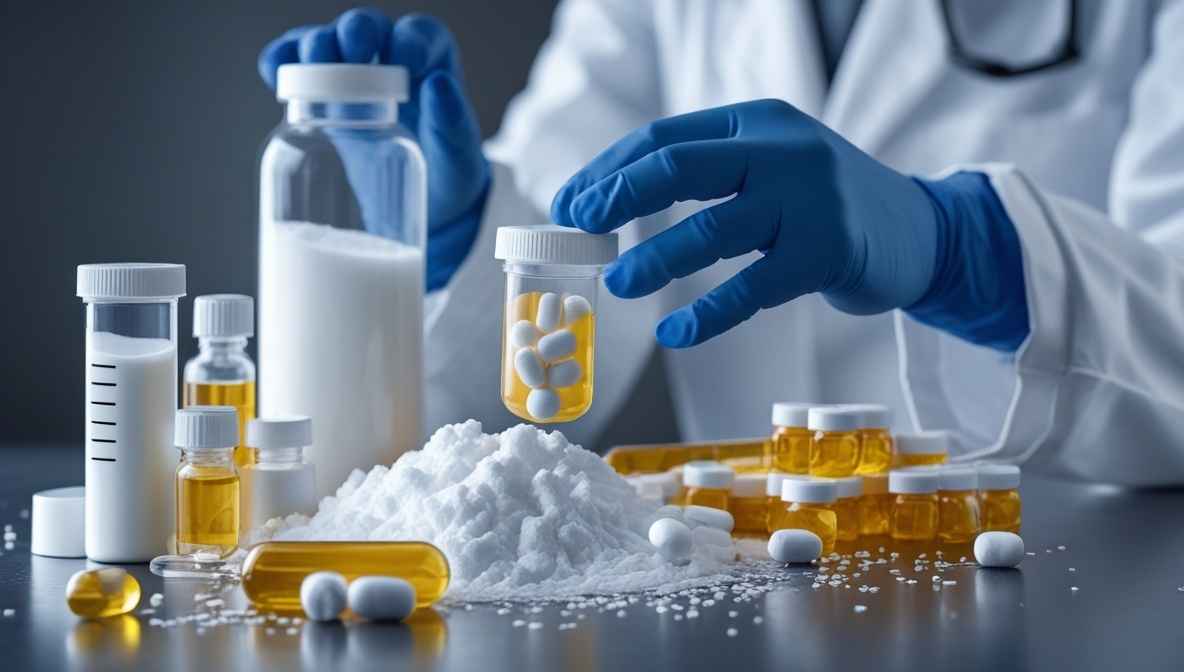
- Process Optimization: Determining the optimal freeze-drying cycle for each formulation can be complex. Process performance qualification helps ensure effectiveness.
- Moisture Retention: Inadequate drying can lead to residual moisture, reducing product stability.
- Equipment Failures: Malfunctions such as compressor excess pressure or freeze-dryer leak detection can compromise product quality.
- Regulatory Compliance: Adhering to stringent CGMP guidelines and regulatory requirements. cGMP guidelines for lyophilized product manufacturing provide necessary standards.
Best Practices for Enhancing Stability
1. Monitoring Vacuum Performance
Ensuring vacuum integrity is essential for achieving the desired drying efficiency. Vacuum chamber lyophilization helps maintain the required low-pressure environment for effective sublimation.
2. Regular System Verification
Periodic assessments such as freeze-dryer periodic performance verification and vacuum performance verification help detect potential issues that may compromise drug stability.
3. Clean-in-Place (CIP) and Sterilization
Maintaining a contamination-free environment is vital for lyophilized drug stability. Freeze-dryer CIP process efficiency and clean-in-place procedures ensure sterility and product quality.
4. Process Validation and Compliance
Adhering to cGMP guidelines is necessary for regulatory approval and drug stability assurance. Lyophilization validation best practices and regulatory compliance for lyophilized products guide manufacturers in maintaining high-quality standards.
10 Examples of Lyophilized Drug Stability
Vaccines (e.g., Measles, Mumps, and Rubella—MMR Vaccine)
Lyophilization helps maintain the potency of live attenuated vaccines by preventing degradation caused by moisture.
Monoclonal Antibodies (e.g., Rituximab, Trastuzumab)
These biologics are highly sensitive to environmental factors, and freeze-drying extends their shelf life while preserving their therapeutic properties.
Antibiotics (e.g., Ceftriaxone, Vancomycin)
Many injectable antibiotics are lyophilized to ensure they remain stable at room temperature and have a longer storage duration.
Protein-based Drugs (e.g., Erythropoietin, Interferons)
Lyophilization stabilizes protein structures and prevents denaturation, making long-term storage possible.
Plasma-derived Products (e.g., Factor VIII for Hemophilia)
These blood clotting factors require freeze-drying to maintain stability and efficacy for extended periods.
Hormones (e.g., Human Growth Hormone, Somatropin)
Lyophilization helps maintain the bioactivity of peptide hormones and facilitates easy transportation.
Gene Therapy Products (e.g., mRNA-based drugs, Viral Vectors)
Freeze-drying stabilizes nucleic acid-based therapies, protecting them from degradation during storage and shipping.
Insulin Formulations (e.g., Lyophilized Insulin for Diabetic Patients)
Lyophilization enhances insulin stability, reducing the risk of aggregation and loss of potency.
Cancer Drugs (e.g., Doxorubicin, Paclitaxel in Lyophilized Form)
Chemotherapy drugs are often lyophilized to maintain their stability and simplify preparation for intravenous administration.
Lyophilized Diagnostic Kits (e.g., PCR Reagents, Enzymes for Molecular Testing)
Diagnostic reagents used in molecular testing are freeze-dried to ensure they remain stable without refrigeration, improving their usability in remote areas.
These examples demonstrate how lyophilization enhances drug stability, making critical pharmaceuticals more accessible, durable, and effective over time.
Conclusion
Ensuring lyophilized drug stability requires meticulous attention to formulation, processing conditions, packaging, and compliance with regulatory standards. By implementing best practices such as temperature control, vacuum monitoring, system verification, and proper clean-in-place procedures, pharmaceutical companies can achieve optimal stability for their lyophilized products. For more insights into freeze-drying advancements, explore new improvements in lyophilization services.
